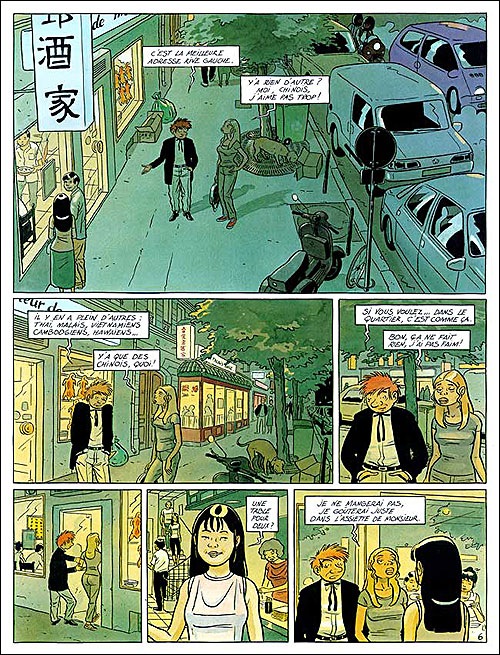The recently concluded Angoulême comics festival is the most respected comics event in the world, but also one a bit remote from the daily comics grind of the average American reader. Two con reports will bring you up to speed in a hurry. Before we link, one note: I wrote earlier that crowds were reported as smaller this year, but the overwhelming evidence is that the festival was packed, as usual, with official attendance given as 215,000.
Okay, links! D&Q’s associate publisher Peggy Burns has posted a delightful travelogue, emblematic of both the heritage of delightful travelogues published at the D&Q blog and also the kind of happy miasma—respectful signings, tents running riot with the flower of world cartooning, afternoon wanderings through a medieval village and late nights of drinking and talking with the greatest living minds of comics—that those of us who have never been will always imagine the festival to be. There was also some business:
I am invited to Angoulême on a program that brings North American publishers to the festival to promote the rights sales of french comics. And it works. Last year, we bought several titles and became enamoured with Anouk Ricard. The program strives to invite a variety of publishers and this year I was joined by Image Comics‘ Todd Martinez, Lerner Publishing Carol Burrell, our incredible host Ivanka Hahnenberger of VIP Brands and Abrams Comic Art (and former coworker of mine from DC Comics) Charlie Kochman (and the aforementioned Mark Smylie and the not pictured Alex Bowler of Random House). All of us spend Thursday and Friday in back to back meetings from 9 am-7 pm with french publishers looking for
the next Persepolisbooks to buy.
Is there no program to invite bloggers? Looking at Peggy’s photos, I can only be wracked by the sobs of abject jealousy.
For a different view, Matthias Wivel wraps up his TCJ coverage with the kind of informed and frank analysis we need more of. Well, it seems informed from where we sit, anyway—Wivel is far mroe knowledgeable about the state of Eurocomix than we. Wivel suggests that, although still an idyll of comics artistry, the festival is driven by its own focus on a certain period of cartooning and cartoonists that would be updated and expanded—this year’s festival president Art Spiegelman being an example of a broader vision that enriched the experience:
This year’s festival at Angoulême was a success, both in terms of popular interest and artistic quality. There are no two ways about it. Its director Franck Bondoux reported more than 215,000 guests over the weekend, up somewhat from previous years, and Saturday especially was close to overcrowded, with the main tents temporarily having to close their doors to manage the influx. At the same time, festival president Art Spiegelman not only (co-)curated two extraordinary shows, but also brought a lot of international interest, tempering the francophone myopia that has long plagued the festival (and which I addressed in last year’s report). On the balance, I would call him the best president of the last decade, presiding over one of the best festivals in that same period.
Yet problems persist and one is tempted to see them exemplified by this year’s Grand Prix winner, Jean-Claude Denis, who will preside over next year’s fortieth anniversary. It is not that the Angoulême academy of past Grand Prix winners, which selected Denis, has all that much say in the planning and execution of festival, but their selection of what is arguably the highest honor formally bestowed on comics makers worldwide is still strongly symbolic, and the president each year has a unique chance to shape its artistic direction and eventually to point the way forward as part of the academy that chooses his or her successors.





